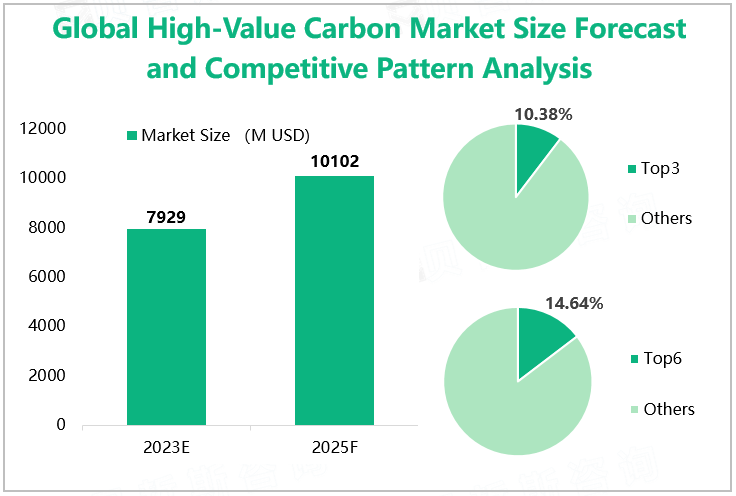High-value carbon generally refers to fullerene, also known as spherical carbon, which is a carbon molecule composed of rings with more than five membered rings. Fuller carbon molecules include a series of allotropes, among which the most common fullerenes are C60, C70, C84, and C240. Among these molecules, carbon atoms form planar six-membered rings with sp2 hybrid orbitals, while carbon atoms below the five-membered ring form a three-dimensional structure with sp3 hybrid orbitals.
High-value carbon has high chemical stability and can resist a variety of chemical reactions. It is widely used in carbon foam, batteries, supercapacitors, filters, activated carbon, and some other fields. These application fields cover multiple aspects such as energy, environmental protection, and materials science, demonstrating the enormous potential of high-value carbon in sustainable development and green energy.
In terms of carbon foam, high-value carbon can be used to produce lightweight, high-strength foam materials, which are widely used in aerospace, automobile manufacturing, etc; High-value carbon in the field of batteries and supercapacitors can also be used to manufacture batteries and supercapacitors, providing new solutions for energy storage and power supply; In terms of filters, high-value carbon can be used to manufacture efficient and durable filter materials, which can be used for purifying air and water quality, providing guarantees for environmental protection and human health; In the field of activated carbon, high-value carbon can be used to manufacture activated carbon with high adsorption performance, which has wide applications in fields such as desulfurization, denitrification, and water treatment. Among all application fields, activated carbon is the largest revenue market downstream. Data shows that in 2023, the global market revenue of high-value carbon used in the activated carbon field is expected to be $2462 million, with an estimated market share of 31.05%.
Global High-Value Carbon Market Size and Share Forecast by Application and Region in 2023
|
|
Market Size (M USD) |
Market Share |
|
Segmented by Application |
||
|
Carbon Foams |
597 |
7.53% |
|
Battery Applications |
1388 |
17.51% |
|
Super Capacitors |
2019 |
25.46% |
|
Filters |
1224 |
15.44% |
|
Activated Carbon |
2462 |
31.05% |
|
Segmented by Region/Country |
||
|
North America |
2173 |
27.41% |
|
Europe |
1689 |
21.30% |
|
China |
1220 |
15.39% |
|
Japan |
1501 |
18.93% |
|
India |
436 |
5.50% |
|
South America |
546 |
6.89% |
|
Middle East & Africa |
364 |
4.59% |
Source: www.globalmarketmonitor.com
Data shows that the total global high-value carbon market size is expected to reach $7929 million in 2023. North America is the industry\'s largest revenue market, with an estimated market revenue of $2173 billion and an estimated market share of 27.41% in 2023; The European market is expected to rank second with a share of 21.30%, and the revenue scale of the high-value carbon market is estimated to be $1689 million in 2023.
From the perspective of the competitive landscape, the concentration of the global high-value carbon market is extremely low. Data shows that in 2020, the top 3 enterprises in the industry reached a total revenue of $664 million, accounting for only 10.38%. The total revenue of the top 6 enterprises was $937 million, with a total market share of 14.64%. The top three companies in the rankings were Osaka Gas Chemicals Co., Ltd., Cabot Corporation, and Kuraray Co., Ltd. In 2020, the high-value carbon market revenue of these three companies accounted for 2.68%, 2.41%, and 1.55% of the global market, respectively.
Global High-Value Carbon Market Size Forecast and Competitive Pattern Analysis

We provide more professional and intelligent market reports to complement your business decisions.